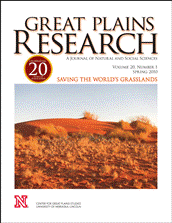Center for Great Plains Studies

Great Plains Research: A Journal of Natural and Social Sciences (through 2013)
Date of this Version
Fall 2004
Document Type
Article
Abstract
Immigration to the United States since 1965, usually labeled "the new immigration," has several distinguishing features. First, the predominant source nations are in Latin America, the Caribbean, Asia, the Middle East, and Africa, rather than Europe. The second is a new trend within this scenario, the diversification of destinations, such that migration involves not only Los Angeles and New York, but also numerous small cities in the Prairie and Great Plains states, locations that once received Europeans and Mexicans but have been little involved in international migration for decades. In order to understand the dramatic social and cultural changes stemming from the new immigration, it is helpful to have at hand the tools of cultural anthropology, and in this book we have an excellent overview of the perspectives, methods, and findings of that field. Anthropology is notable for its locally-grounded field research, involving rich and enduring encounters with immigrant and host communities, and its holistic attention to both objective and subjective aspects of migration. The main task of Foner's capable introduction, then, is delineating these qualities of anthropology and its track record in US immigration studies.


Comments
Published in Great Plains Research Vol. 14, No. 2, 2004. Copyright © 2004 The Center for Great Plains Studies, University of Nebraska–Lincoln. Used by permission.